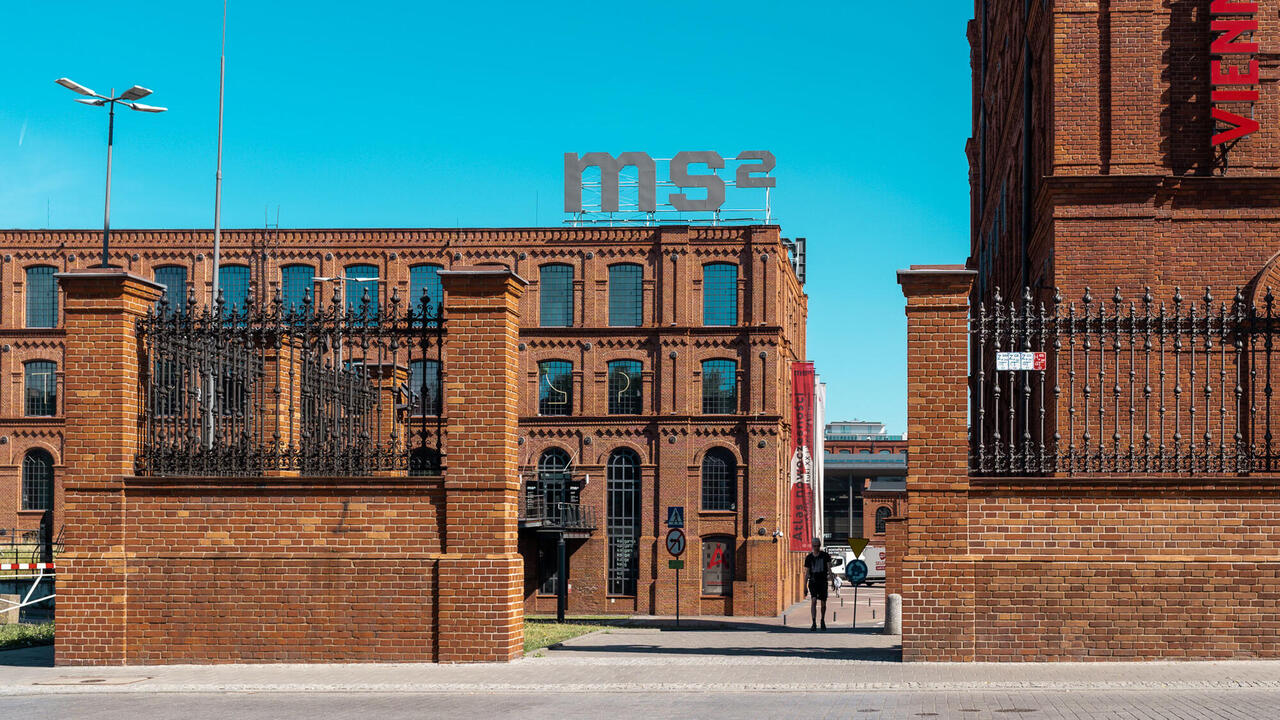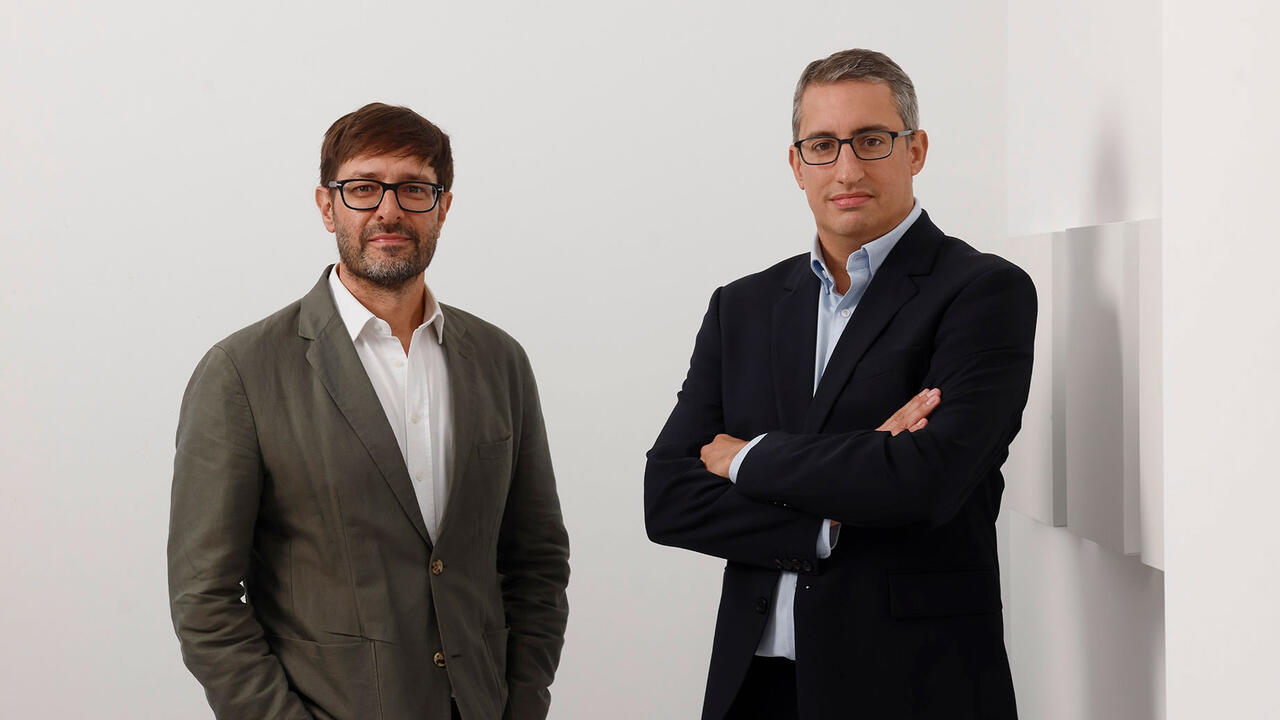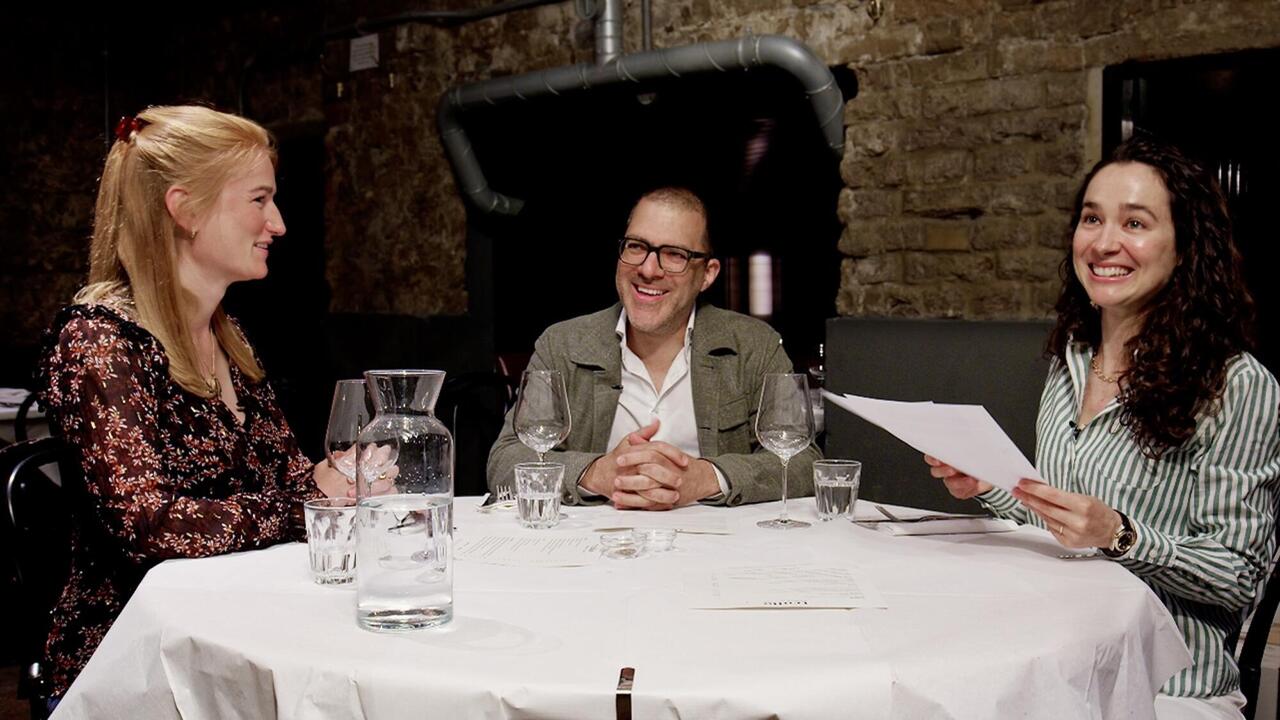Meredith Monk Celebrates Six Decades of Art Making
The legendary artist in conversation about powerful sounds and taking creative risks
The legendary artist in conversation about powerful sounds and taking creative risks

Marina Rosenfeld I’m 100 percent certain that you won’t remember this but, back in 2009, I helped you with your microphone at the New York Park Avenue Armory memorial event for Merce Cunningham.
Meredith Monk I’ll never forget it – partly because I was the last on stage, since Merce always asked me to sing a particular solo with him as the final performance of an evening of concerts we used to do together. I also remember it because I was getting a cold and I had to record a week or two later. My voice flew through the space that night, but the next day I was unfortunately really sick.
MR How do you negotiate space as a composer, performer and choreographer, or equally, as a practitioner of movement or someone who, it seems to me, seeks to engage their full arsenal as a human being?

MM Space is fundamental. I always say to my students and to those who work with me: space is our ally. The first piece I performed in New York was Break at Washington Square Galleries in 1964. It was a solo, but I used the whole gallery. It was very much site-specific – that was my orientation in those days. The first part of my process was to go into a space, listen to it and try to hear what it needed or wanted. I was also influenced by my childhood training in Dalcroze Eurhythmics – a method of teaching music through the body, developed by Émile Jaques-Dalcroze in the early 20th century.
MR It sounds like you’re describing a synthesis of movement and sound investigation. I say that as a composer interested in the kinds of spatial, social and other relations that one wants to take note of as a first-order encounter with a new site. For me, the encounter generally starts with a compositional idea or figuration of sound that drives other decision-making. In your case, your engagement with dance and theatre-making would appear to be primary?
To me, what sound does in space is primary: how do you make a room sing?
MM Actually, I would say that my composition work has become primary over time, because my music has become my primary source. I call it the river of my life. I’m always working on music, day after day. Sometimes, these larger interdisciplinary ideas come into my mind and take many years to put together because they’re very complex. But music is my first language: the language of my heart and my mind. I’ve always found it very strange that people with Western European classical music training are rarely taught about space. They’re just taught: this is where you are positioned and you’re making sound. But, to me, what sound does in space is primary. My first idea was about resonance in space: how do you make a room sing?
MR I vividly recall seeing your opera ATLAS [1991] at the Brooklyn Academy of Music in 1992. In a work comprising so many forms of expression – dance, film, theatre, music – I especially retained the ghostly image of an enormous white horse that appeared at one point on a large screen over the stage. I’m evoking this particular image to ask you about scale. Your early performances were solo investigations in which you centred yourself – your body and voice – on stage. How did you shift from solo mode to mobilizing enormous numbers of people – as well as props, sets and projections – in your works?

MM It took many years to develop my vocabulary – in terms of both my voice and my interdisciplinary pieces. 16 Millimeter Earrings [1966], for instance, was a real breakthrough for me because I finally found what I had been looking for: a poetic, abstract form that wove together a multitude of perceptual modes as an affirmation of our possibilities as human beings. It was the first piece for which I created a full sound score, and then it was around that time that I had a revelation about the voice being an instrument.
I’m a fourth generation singer in my family, so I felt right away that by turning more attention to my voice, I was also going back to my bloodlines. My background in movement also meant that I trusted non-verbal communication as something that could be more universal. I began an intense exploration of my own vocabulary, thinking about the kinetic aspects of the voice: for example, how would a voice spin or fall or move with the fluidity of a spine or a hand? I also went back to playing keyboard again, which I had done as a child. I worked with an organ instead of a piano because I wanted its epic quality to expand the complexity and layers of my forms. That really came to fruition in a piece called Tablet [1976], in which I did all the vocal and keyboard work myself.
I created Tablet for a concert that Merce had asked me to perform in. As the piece evolved, I began to think it could have other voices, so I asked two people to join me, almost like backup singers. But then I realized: no, this piece should include four women’s voices with equal weight, not exist as a solo with backup. Around the same time, I was working on Quarry: an opera in three movements [1976], about World War II, for which I needed a chorus of 30 really good singers because I was working with very complex rhythmic and canonic pieces. From that group, I chose three of the strongest singers, and that was the beginning of Meredith Monk and Vocal Ensemble.

MR We encounter the work of an artist as it communicates outwardly toward us. At times, I feel almost allergic to attending too much to the internal experience, because I’m so interested in what happens transactionally, between bodies. This is especially true of music and performance where there’s so much negotiation. At the same time, there’s this kind of fascination that many people have with abandonment and control, which are conflictual.
MM I call them discipline and freedom.
MR See, you have beautiful terminology for that already! Do you know what the limits in pitch and frequency are for your own voice or is there no cap on it? Because sometimes you go extraordinarily high.
MM Well, in the early 1970s, I made a piece called Do You Be. Usually, it takes me a long time to compose something, but that came through me in one afternoon, right from the middle of my body. I don’t even have words for it. You can’t get to those high notes just from your throat: they really come from the breath and the strength at the centre of your body. That’s the beautiful thing about singing: I remember my whole body being full – that’s the only way I can explain it – then those high notes just flew out. There wasn’t any effort. Those moments are what you live for: when you’re soaring and you can count on the strength of your body. If your body is tired and you don’t have that support from the centre, it’s much more difficult. Singing is a whole-body thing.
To coincide with the opening of my current retrospective survey, ‘Calling’, at the Oude Kerk in Amsterdam, I did a concert with Katie Geissinger and Allison Sniffin, both longtime members of my ensemble. I just felt like my voice was soaring in that space. It was like we were riding the breath, but we were also riding the space. It was so great. I’m sure you’ve experienced that: how a resonant space is incredible to perform in.

MR Last year, I staged a 48-hour performance for the inaugural Biennale Son in an enormous, resonant space: a former hydroelectric power plant near Lausanne. Enchanted by the space, I decided to make a new chapter for my work Deathstar [2017], which I had ostensibly completed, adding a Disklavier and live piano to this performance to address the site and time. In a way, my approach mirrored the evolution of formats that you pioneered in works such as Quarry, which is comprised of a performance, a film, then another film that’s a prelude to the first film – always under the same title, which I find so compelling. Can you talk about how, as an artist, you manifest different versions of your works? What does it mean to shift between various formats?
MM I’ve always liked the fact that the same material can take different forms. My most recent piece, Indra’s Net [2023] – which premiered in June at the Holland Festival – was conceived as a live installation-slash-performance, but the final section, Rotation [2021], also holds by itself: I created a video-slash-installation called ‘Rotation Shrine’, based on a concept that I’ve been working with for many years. I’m interested in form and structure: I love to work between the cracks and try to open things up and find new forms. Sometimes, I don’t know what form a piece will take until I’ve made it. For example, with The Politics of Quiet [1996], I came in with all this music and I kept on trying to add staging, but the piece didn’t want it. By the time I finished, I realized that it was a non-verbal oratorio, but I didn’t know that when I started.
MR Did you have any interactions with John Cage?
MM We were very good friends at the end of his life. When he first heard me sing in the mid-1970s, he asked me: ‘Meredith, where do these voices come from?’ I said: I have no idea! Then we just both started laughing. We got to be really good friends and did a few events together. In the 1980s, he asked me to sing his Aria [1958], which I found pretty challenging: to me, it was linear while my music is much more circular, structurally. The other thing about it was that the score was graphic, with different colours denoting different vocal qualities. There were these little black squares that he told me meant ‘non-musical’, which was unusual: what did he mean by that? Then, he used these lines to indicate ‘high’ or ‘low’. I would like to have had more time – six more months, at least – to work on the material. Years later, I also got to perform his Song Books [1970].

MR How frequently have you sung the work of other people?
MM Very rarely – perhaps twice – for John and for my friend Donald Ashwander, who was a wonderful ragtime composer and musical director for the Paper Bag Players, a New York children’s theatre troupe. He came from Alabama and he wrote beautiful songs that drew from his Southern background. We recorded an album of me singing his songs that we never released, but it was wonderful.
Mostly, though, I sing my own compositions. I try to start from zero with every piece – as risky as that is and as terrified as I still am at the beginning of the process, even after 60 years – because that’s what makes it so interesting. I live for moments of discovery. The essential question at the core of my work in music, visual art and movement is: how can I offer something that encourages people to see and hear in a new way something they might ordinarily take for granted? I think art can do that: it can open doors. People leaving a music concert, for instance, might go out into the street and see the tree in front of the theatre differently or hear the traffic in a new way.
How can I offer something that encourages people to see and hear in a new way?
MR Have you ever despaired about art’s limits?
MM I wouldn’t say despaired, but I have questioned them. I feel a lot of despair about the world right now. How do you work with that? During the pandemic, I was determined to bring Indra’s Net to life because I’d been working on it for ten years. Everything else had just stopped, but I felt the piece was emphatically and urgently asking me to bring it to life. At the same time, I kept saying to myself: is this useful in the world? Would I be better helping out in a hospital? Firstly, I realized I’d probably be really bad at it, for one thing. Secondly, it really affirmed my belief that, whatever you do – whether it’s making art, baking a good cake or being a nurse – if it comes from love, it’s good. During such periods, that’s all we really can do. I keep contemplating the folly of human nature – the ignorance and fear – and I just can’t understand it. I feel like if I do something that really comes from love, even if I don’t know how it’s going to resonate, it’s what I can contribute.
MR There’s this moment that most people encounter the first time they hear their recorded voice: it’s more than uncanny; it can be self-excoriating. That can’t be me! I know it’s me, but it can’t be me! In your life’s work, you’ve addressed not just producing and amplifying the voice, but the inscription and multiplication of your own and others’ voices. Given that your work is currently the subject of a two-part retrospective, is there something extraordinary about encountering yourself refracted in so many ways?

MM Walking into both exhibitions, I thought: who was that young woman? In the early days, the more conservative and conventional classical world – whether in music or movement – could be quite vicious at times. It hurt me: I was and am as insecure as anybody else. When I think of that young woman, I ask myself: how did I have the courage to go on?
From the beginning, I’ve wanted to make music that’s also beneficial to other people. I was touched to discover that a couple of women I know both listened to Our Lady of Late [1973] while they were giving birth. More recently, my dear friend Jacki Apple decided that she wanted to die listening to Rotation. I’ve devoted my life to making artwork. That’s been my devotion. I don’t know how to do anything else.
This article first appeared in frieze issue 240 with the headline ‘Conversation: Meredith Monk and Marina Rosenfeld’
Main image: Meredith Monk and Vocal Ensemble, Indra’s Net, 2023, performance view. Courtesy: the artist, Holland Festival and Hartwig Art Foundation; photograph: Ada Nieuwendijk
























